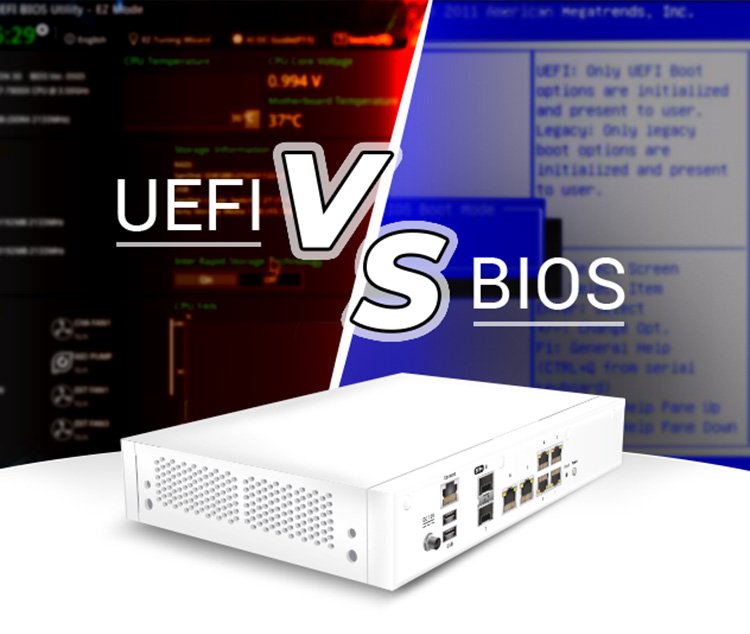
Endian offers a wide range of Software and Virtual solutions designed to provide maximum protection for corporate networks. Below you'll find an insight into the differences between UEFI and Legacy BIOS, to help you choose the perfect product for your network security needs faster and easier.
Endian Software and Virtual appliances
| Product | UEFI | Legacy BIOS |
| UTM Software |  |  |
| UTM Virtual |  |  |
| 4i Edge Software |  |  |
| 4i Edge Virtual | No |  |
| Switchboard Software | No |  |
| Switchboard Virtual | No |  |
Note: Products with "No" are not available as UEFI.
Glossary:
- BIOS: Basic Input Output System
- UEFI: Unified Extensible Firmware Interface
- SSD: Solid State Disk
- TB: Terabyte (1024 Gigabyte)
- EB: Exabyte (1024 TB)
UEFI or Legacy BIOS? Which is the right product for you?
| UEFI |
|
| Legacy BIOS |
|
General technical differences
| UEFI standard technical properties |
|
| Legacy BIOS standard technical properties |
|
Comparison of technical properties
| UEFI | Legacy BIOS | |
Lifecycle | Since 2002 | 1975 to 2020 |
Operating Mode | 32/64bit | 16bit |
User Interface | Enhanced GUI navigation with mouse | Textual UI navigation with keyboard |
Partitions | Up to 128 partitions | Up to 4 partitions |
Partition Size | < 18EB | < 2.2TB |
Performance | Fast boot | Slow boot |
Storage | ESP protected partition with device information on an .efi file and Bootloader | System initialization information on EPROM, Bootloader in the first hard disk sector (512 bytes) |
Security | Secure Boot | Password protection |
In conclusion, whether you're looking for flexibility, high performance, or advanced security features, Endian has the right solution for you. Our UEFI-compatible products are designed for modern hardware, offering fast boot times and the ability to handle high network traffic. For older systems, our Legacy BIOS products provide reliable performance and security.
Explore our security solutions and find the perfect match for your business needs.
For more information get in touch with us!
